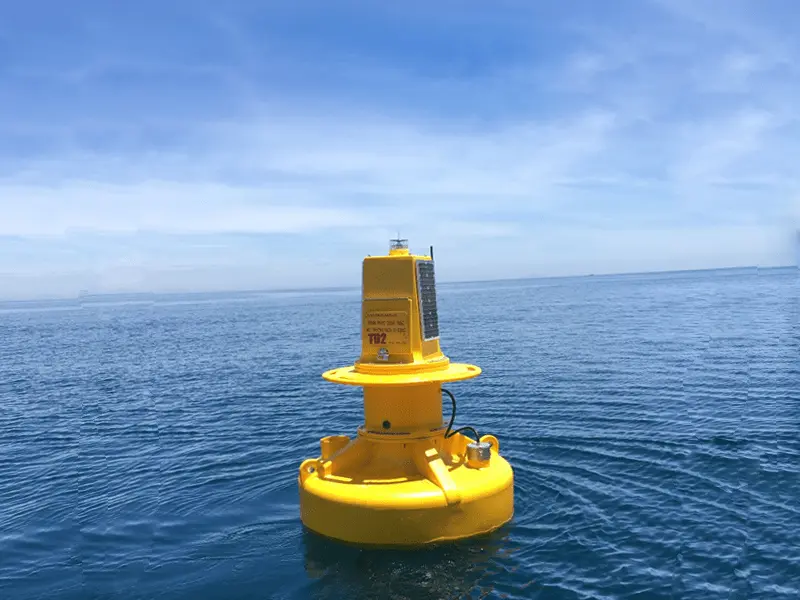Reecotech proudly introduces its Seawater Level Monitoring Buoy System, an advanced technology for continuous and accurate collection of meteorological, oceanographic, and marine environmental data. This buoy system is designed to meet the needs of comprehensive and efficient monitoring of coastal and offshore areas, providing essential information for scientific research, hydrometeorological forecasting, and marine environmental management.
Product
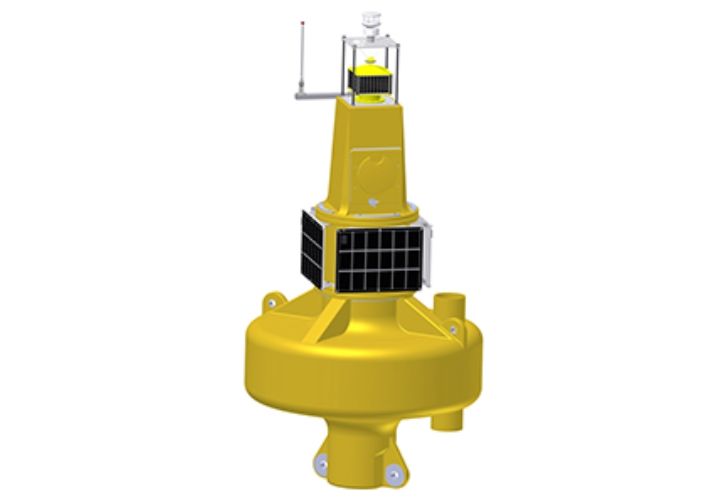
The Buoy for meteorological, hydrographic and water quality monitoring
- Measurement of meteorological parameters including: wind (wind speed, wind direction), air temperature, humidity, barometric pressure, solar radiation.
- Observation of hydrographic parameters: current (flow profile), wave (wave height, wave period and wave direction).
- Continuous monitoring and monitoring of water quality indicators, including: temperature, conductivity (EC), salinity, turbidity, dissolved oxygen (DO), total amount of algae and blue-green algae (chlorphyll) & blue green alage), fDOM/ CDOM (Fluorescent Dissolved Organic Matter, ratio to Total Dissolved Organic Matter (TOC) parameter), this parameter helps to continuously monitor the discharge of polluted water (if any) into the river/sea), total dissolved solids (TDS).

Bluetooth Recording Current Meter (RCM Blue)
Stand-alone sensor
Now available as a stand-alone sensor with Wetmatible Connector. The sensor can also store data on an internal SD card with an RS-232 interface for easy integration.The RCM Blue features the following:
- Internal data storage
- Configuration and data retrieval by use of Bluetooth
- Battery compartments with up to 70Ah
- External LED with color code reports status
- Software for configuration and retrieval of data and USB to Bluetooth adapter included
- Unique ZPulse multi-frequency acoustic technology improves data quality, sampling speed and reduces power consumption
- Built-in solid state three axis compass and tilt sensor with compensating algorithm
- Direct readout of engineering data
- Fast sampling rate
- Low power consumption
- Insensitive to fouling
- Low maintenance needs
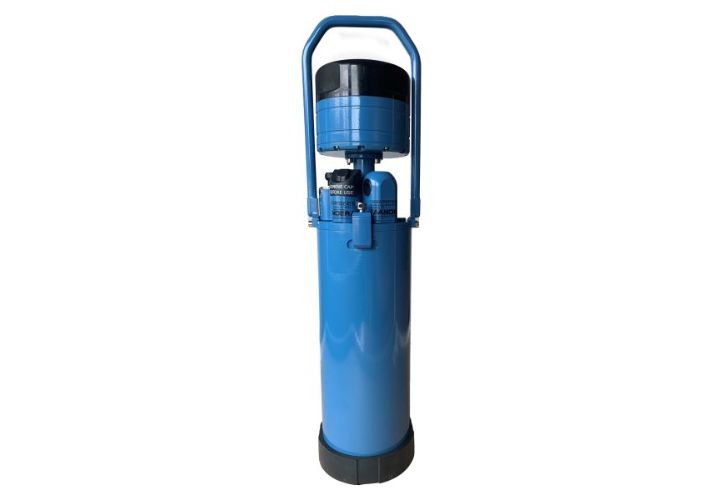
Single-point Recording Current Meter
Seaguard RCM Advantages:
- Long deployment time in autonomous operations
- Large storage capacity on removable SD card
- Sensor bus for string systems
- Up to 4 Analog sensor input (0-5V)
- Serial input from sensors from other manufacturers
- Broadband ZPulse® multi-frequency technology reduces power consumption and improves quality
- 300 m, 3000 m and 6000 meter versions
Options
- SeaGuard RCM SW - Depth rating max 300m
- SeaGuard RCM IW - Depth rating max 3000m
- SeaGuard RCM DW - Depth rating max 6000m

Profiling Current Meter
Applications:
- Buoy mounted
- Hyd/Met systems
- In-line mooring line with upside down possibility
- Two DCPS sensors connected to one instrument
- Ocean observatory with sensor string
- Bottom mounted
- Multiparameter ocean observations
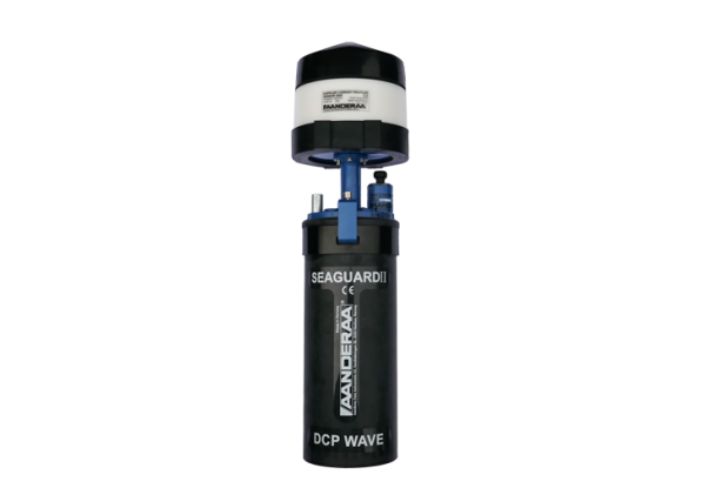
Profiling Current Meter and Wave
- Independent measurement of waves and currents.
- Field validated data-comparison with MOTUS buoy, Datawell Waverider and pressure based non directional wave sensor
- Measures wave from centimeters to 20m
- 2Hz or 4Hz wave sampling
- Processing of up to three columns in parallel, provides flexible setup with both surface referred and bottom referred cells.
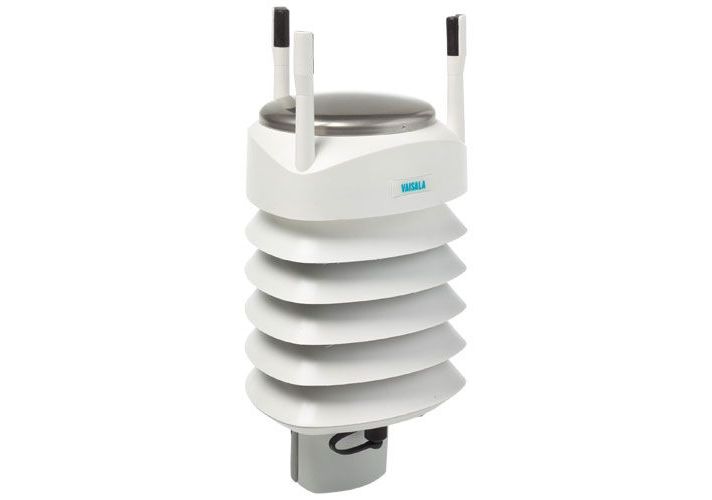
WXT536 Multi-Parameter Weather Sensor
- Low power consumption is ideal for battery powered systems
- No moving parts for durability and long maintenance intervals
- Easy integration with 3rd party data collection platforms

MOTUS Stand-Alone Sensor
- For larger buoys, the response to short wavelengths may be suppressed. This can to some extent be compensated for by activating and tuning the build in transfer function.
- The sensor can be placed in non-ideal location on the buoy. The off-center compensation can be enabled to remove the errors that in some cases may be significant.
- Buoys may have magnetic parts affecting wave sensors and other sensors requiring a magnetometer or compass. The MOTUS can receive an external compass directly and utilize this to ensure correct wave direction data.

VnEmisoft automatic monitoring data management software
Overview
A marine buoy operates continuously and in real-time, collecting 24/7 data on critical parameters such as wind speed, wind direction, currents, waves, water temperature, salinity, dissolved oxygen, and water quality. This data is instantly transmitted to the control center, enabling continuous monitoring and assessment of marine conditions.
The buoy is designed to withstand various harsh environmental conditions, from calm coastal areas to rough offshore waters. With high durability, the system ensures stable and reliable operation over long periods.
One highlight of the buoy is its multi-layer measurement capability. The buoy can be equipped with sensors at various depths, allowing for detailed information collection on water column structure and parameter variations with depth.
Besides its monitoring function, the buoy can integrate additional features such as signaling lights, alarm horns, or environmental data collection systems, enhancing its applicability and efficiency.
Compared to traditional monitoring methods such as using ships or building fixed stations, the marine buoy offers a more cost-effective solution. The investment, operation, and maintenance costs of the buoy are significantly lower, while providing more continuous and accurate data.
Applications
Marine buoys for oceanographic and environmental monitoring are widely applied in many fields, including:
-
- Scientific Research: Providing data for studies in oceanography, meteorology, hydrology, marine ecology, and climate change.
- Weather and Hydrological Forecasting: Providing input data for models predicting sea waves, sea level, storms, coastal floods, and other oceanic phenomena.
- Marine Environmental Management: Monitoring seawater quality, detecting pollution, and assessing the impact of coastal activities on the environment.
- Maritime Support: Providing information on weather and oceanographic conditions for safe marine operations.
- Tourism Management: Providing information on seawater quality and safety conditions for coastal tourism activities.
Measurement Parameters
This marine buoy device is capable of measuring a range of important parameters, including:
-
- Station Coordinates: Determines the exact location of the observation station.
- Wind Speed and Direction: Provides information about wind conditions in the observation area.
- Surface Current Velocity and Direction: Measures the speed and direction of surface currents in the sea.
- Current Velocity and Direction at Various Depths: Measures currents at different depths within the water column.
- Basic Meteorology: Includes air temperature, humidity, atmospheric pressure, intensity, and amount of rainfall.
- Sea Water Temperature: Measures the temperature of the sea water at the observation area.
- Sea Waves: Provides information on wave direction, wave height, and wave spectrum.
- Sea Water Quality: Includes conductivity, salinity, turbidity, total suspended solids (TSS), total dissolved solids (TDS), chlorophyll (algae content), and dissolved oxygen (DO).


